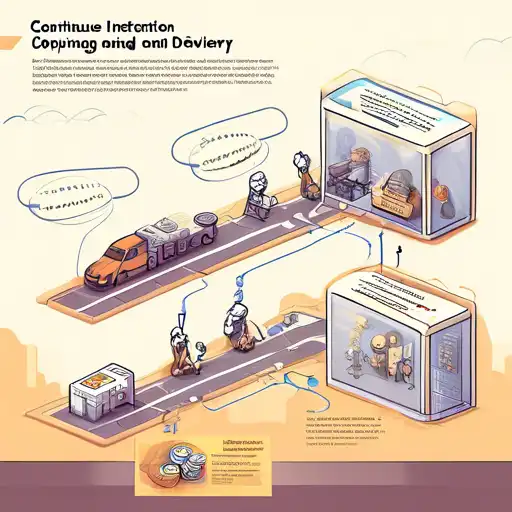What is Continuous Integration and Delivery?
Continuous Integration (CI) and Continuous Delivery (CD) are pivotal practices in the modern software development lifecycle, aimed at improving software quality and speeding up the release process. CI/CD automates the integration of code changes from multiple contributors into a single software project, ensuring that the codebase is always in a deployable state.
The Benefits of CI/CD
Implementing CI/CD brings numerous advantages to development teams, including:
- Reduced integration problems
- Faster release cycles
- Higher quality software
- Improved team productivity
By automating the build, test, and deployment processes, teams can focus more on development and less on the manual tasks that slow down the release cycle.
How CI/CD Works
CI/CD pipelines are the backbone of these practices. A typical pipeline includes the following stages:
- Code commit to a shared repository
- Automated build and test processes
- Deployment to a staging environment
- Final deployment to production
Each stage is automated, with failures at any point triggering alerts to the team. This ensures that issues are identified and resolved early in the development cycle.
Best Practices for Implementing CI/CD
To maximize the benefits of CI/CD, teams should adhere to the following best practices:
- Maintain a single source repository
- Automate the build process
- Make the build self-testing
- Ensure fast builds
- Test in a clone of the production environment
Adopting these practices helps in creating a robust CI/CD pipeline that supports agile development methodologies.
Challenges in CI/CD Adoption
While CI/CD offers significant benefits, teams may face challenges during adoption, such as:
- Cultural resistance to change
- Integration with legacy systems
- Initial setup complexity
Overcoming these challenges requires a commitment to continuous improvement and a willingness to invest in the necessary tools and training.
Conclusion
Continuous Integration and Delivery are essential practices for teams looking to improve their software development processes. By automating the integration and delivery processes, teams can achieve faster release cycles, higher quality software, and improved productivity. For more insights into optimizing your development workflow, explore our agile development resources.
